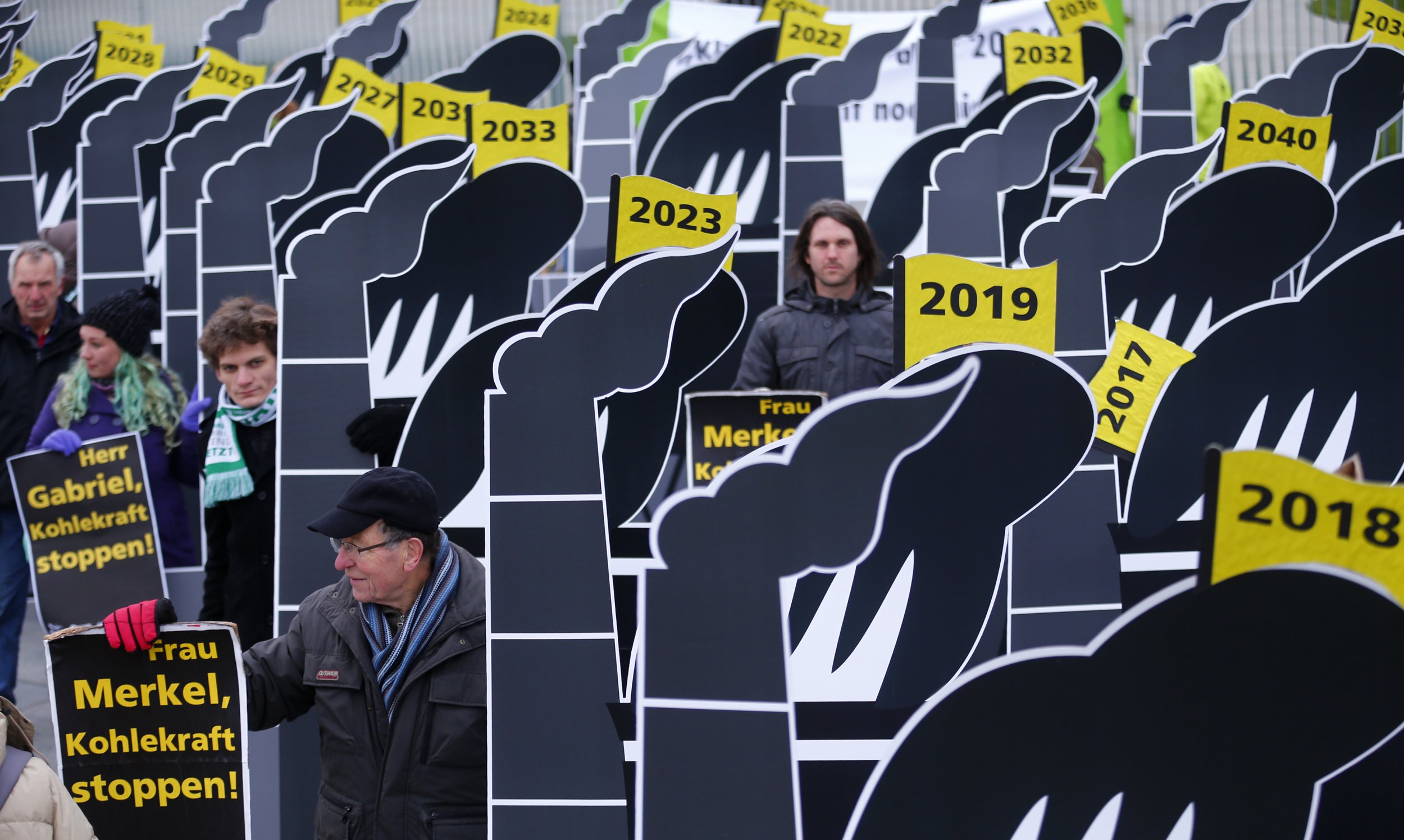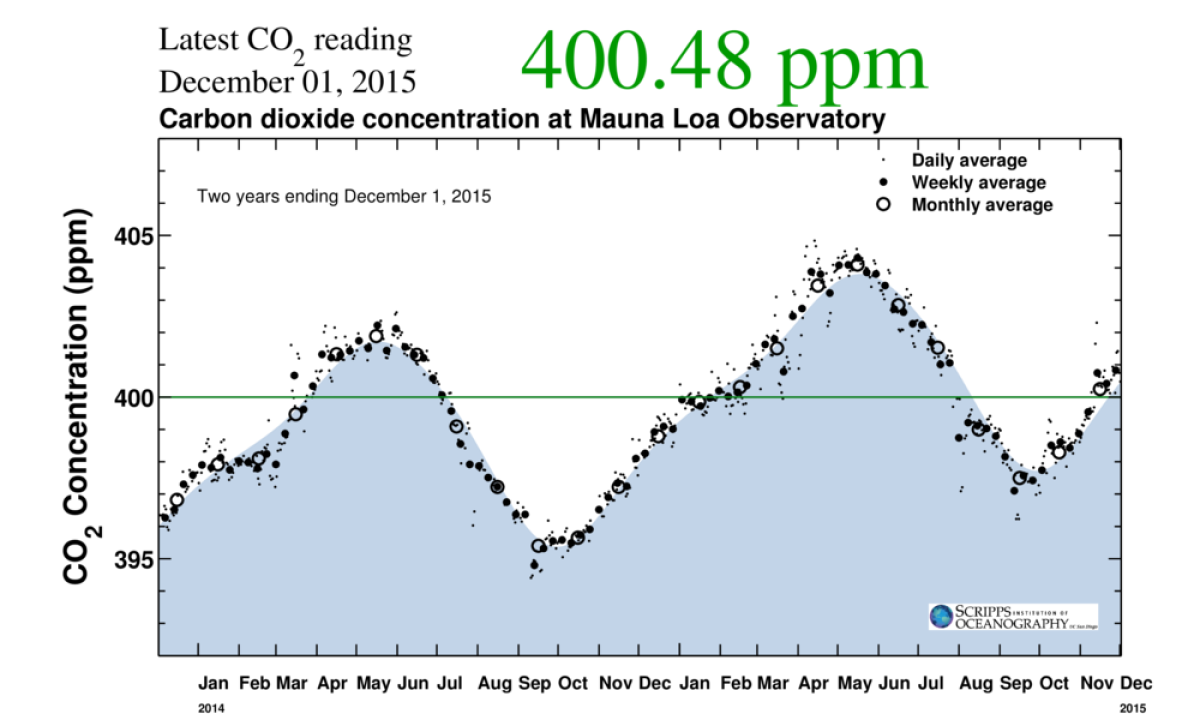
This story originally appeared on Slate and is reproduced here as part of the Climate Desk collaboration.
One of the hardest parts of writing about global warming—and there are lots and lots of hard parts—is simply keeping up with the news. Much of it comes in short newsy bits, worth knowing but difficult to write about as an individual full post. Since the 2015 U.N. Climate Change Conference is being held in Paris this week, Slate has posted a weeklong series of shorter articles about global warming and its fallout. Here are Part 1, Part 2, and Part 3. What follows is the fourth article in this series.

Carbon dioxide is a greenhouse gas: It lets visible sunlight pass through our air, but then traps the infrared reradiated by the Earth's surface. We humans put 40 billion tons of it into the atmosphere every year, dwarfing all other persistent natural sources (the sources and sinks of which tend to balance out over time).
One one day in May 2013, for the first time in recorded history, the global daily average of CO2 in the air hit 400 parts per million. In April 2015, the monthly average concentration of CO2 in the air passed that same mark.
It now looks like 2015 will be the last year we'll see readings below 400 ppm. Ever.
This graph (reproduced above, called the Keeling Curve) shows carbon dioxide levels from the end of 2013 to November 2015. There's an annual cycle as trees absorb the gas, which occurs mostly in the Northern Hemisphere (there's less land and forest south of the equator, where seasons are reversed). The minimum is in September, but as you can see the steady rise of CO2 overall means it's very likely that next year's minimum will be above 400 ppm.
Welcome to our brave new world. And in the meantime, while Sen. James Inhofe plays with snowballs (and actively plots for the Paris Climate Change Conference to fail) and Rep. Lamar Smith acts out on his conspiracy fantasies, the real world barrels on.
Uncommon Knowledge
Newsweek is committed to challenging conventional wisdom and finding connections in the search for common ground.
Newsweek is committed to challenging conventional wisdom and finding connections in the search for common ground.
About the writer
To read how Newsweek uses AI as a newsroom tool, Click here.








